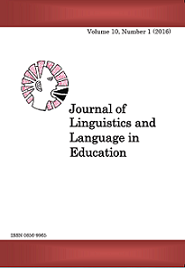Implicit Teaching of English Grammar and its Implications forthe Building of Communicative Competence in Tanzania
Abstract
There have been various paradigms in the teaching of grammar globally and in Tanzania in particular. In Tanzania, English grammar teaching was previously done using a content-based approach whereby grammar was taught directly by explaining explicitly the pertinent rules and principles. Currently, following the adoption of the communicative language teaching approach, grammar is taught implicitly by subjecting students into various communicative tasks. This paper examines teachers ' instructional practices in teaching English grammar using the communicative language teaching approach. The paper discusses the findings of a study which adopted a qualitative approach and which involved eight teachers from four public secondary schools in southern Tanzania. The paper shows that many teachers still use traditional instructional practices in teaching English grammar which involve memorising grammatical rules and facts, instead of teaching the language in a communicative manner. There are also certain challenges in teaching English grammar using CLT. They include questioning the place of grammar in the EFL context, the discrepancy between the syllabus and assessment, a lack of grammar-teaching materials and teachers ' incompetence in grammar.
Keywords: Communicative language teaching approach, communicative competence, English grammar, grammatical competence, grammar teaching
Downloads
Published
Issue
Section
License
Copyright © by Department of Foreign Languages and Linguistics, University of Dar es Salaam
All rights reserved. No part of this publication may be reproduced or transmitted in any form or by any means, electronic or mechanical, including photocopying, recording, or any information storage or retrieval system, without permission in writing from the publisher, except for short extracts in fair dealing, for research or private study, critical scholarly review or discourse with an acknowledgement.


